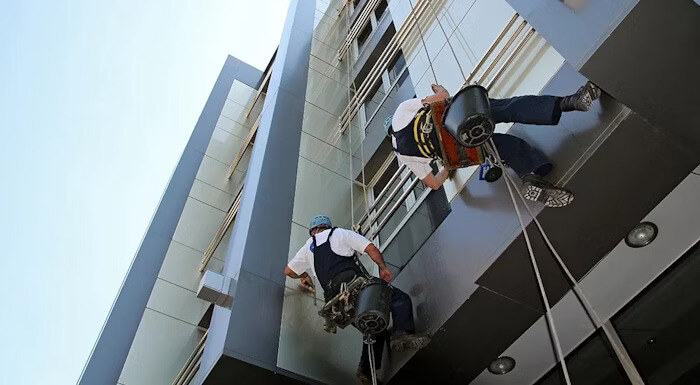
Improving Manufacturing Overall Equipment Effectiveness (OEE) with a CMMS
Looking to improve your Overall Equipment Effectiveness (OEE)? Here's how Maintenance Connection can help make that happen.
Solutions
Workplace Management Solutions
Real Estate Management Solutions
Maintenance Management Solutions
Energy Management Solutions
Engineering Document Management Solutions
Asset Management Solutions
Automate campus scheduling for classes, meetings, and exams with our EMS software.
Plan and manage conferences effortlessly with EMS software to impress guests and streamline operations.
Boost workplace flexibility and maximize space use with seamless desk and room booking.
Organize workplace or campus events smoothly, creating memorable experiences.
Optimize workspace, manage allocations efficiently, and reduce costs with our space management solutions.
Deliver projects on time and within budget by improving communication, collaboration, and efficiency with our software.
Streamline lease accounting for ASC 842, IFRS, and GASB compliance.
Manage leases efficiently by tracking key dates, analyzing costs, and ensuring compliance.
Centralize data and analytics for better insights, faster negotiations, and revenue growth.
Centralize facility and asset maintenance, automate work orders, and ensure compliance with our CMMS software.
Extend asset life, reduce downtime, and prevent costly repairs with data-driven monitoring.
Prevent equipment failures and extend asset life by detecting and addressing issues early.
Make sustainable, cost-efficient energy decisions by monitoring and optimizing power consumption.
Remotely monitor and control equipment with real-time data to predict issues, boost efficiency, and reduce downtime.
Easily share and collaborate on documents, creating a single source of truth for engineers and contractors.
Manage and analyze assets across their lifecycle to schedule maintenance, reduce downtime, and extend lifespan.
Improve visibility, automate work orders, and ensure compliance for efficient facility and asset management.
Resources
Browse our full library of resources all in one place, including webinars, whitepapers, podcast episodes, and more.
Support
Looking for access to technical support, best practices, helpful videos, or training tools? You’ve come to the right place.
About Accruent
Get the latest information on Accruent, our solutions, events, and the company at large.

Learn how a successful CMMS implementation can help you overcome reactive maintenance inefficiencies and maximize your overall return on investment (ROI).
Maximizing ROI and keeping costs can seem like an uphill battle for any business, and an Everest-size climb for a company in an asset-heavy industry. With issues like equipment downtime, low visibility into asset condition and parts inventory, and an inability to prioritize work orders popping up every day, it can be incredibly difficult to move away from reactive maintenance practices and gain the control necessary to maintain a better financial footing.
This can all change with a robust computerized maintenance management system (CMMS). With accurate reports, connected systems and comprehensive work order management, the right CMMS can provide a single source of truth for all the information that your facility and maintenance management team needs to implement effective preventive maintenance strategies and increase ROI.
In fact, the 2020 Benchmarks & Best Practices for Maintenance Management Report indicates that, of facilities that have substantially implemented CMMS, 88% report significant cost savings, ranging from tens of thousands to millions of dollars.
Here are four distinct ways a CMMS can help your business accomplish these tasks and increase ROI.
High equipment downtime is an incredibly common concern for businesses in asset-heavy industries: manufacturers experience an average of 800 hours of unplanned downtime each year. The average cost of each incident is $17,000, though in some industries downtime can cost as much as $50,000 per minute, which translates to $3 million per hour.
And the causes here are varied – sometimes it is human error, sometimes it is equipment failure. The good news is that the vast majority of the time, this unplanned downtime is totally avoidable. A CMMS system can replace disparate systems, Excel sheets and physical paperwork to effectively track:
This information can help you better understand your inefficiencies, thereby enabling your maintenance team to track, report and reduce your downtime. It also takes the guesswork out of your benchmark data and – hopefully – leads to marked improvements over time.
Want to track the exact ROI you would get from a CMMS? Check out How to Determine Your CMMS ROI.
Labor costs can easily get out of control: technicians often do not have the information they need to complete a work order, overtime costs can get out of hand, managers get stuck in a cycle of reactive maintenance – the list goes on. A CMMS offers key features to help, including mobile access, API access, QR code and barcode-enabled workforce tracking, device-agnostic user interface, and more. These features allow:
Ultimately, this sets maintenance managers up for success and allows them to make more informed decisions related to overtime, technician efficiency and labor costs. In the big picture, these features also allow for more effective preventive maintenance planning, reducing the number of expensive emergency repairs, decreasing downtime, and saving you money.
Remember, though, that you have to get your team on board in order to effectively use a CMMS. Our research shows organizations that invest in CMMS training see improvements in labor efficiency. Specifically, 82% of respondents who use a CMMS with proper training reported strong improvements to work scheduling and labor efficiency of personnel.
Preventive maintenance (PM) is essential for improving the performance and reliability of maintenance operations. According to one report, predictive analytics yields a tenfold return on investment, and it results in a savings of 30% to 40%. What is more, total productive maintenance has been shown to increase plant capacity by over 10% and productivity by 50%. In addition, organizations that configure most assets in their CMMS report strong improvements to equipment reliability.
This is due to the fact that, with PM schedules and dashboards on a CMMS, all preventive maintenance information resides in one place, so maintenance managers have access to unlimited amounts of manufacturer-related specifications and metrics. They can use this information to extract meaningful data to pinpoint preventive maintenance needs and manage KPIs:
This ultimately allows organizations to automate PMs, keep track of when maintenance is performed and effectively identify problem areas and opportunities within your organization.
Your business has to order, use and keep track of countless MRO (maintenance, repair and operating supply) items, and your technicians need to access these parts in order to effectively complete repairs. This can be costly. In many cases, MRO accounts can make up as much as 40% of a business’s annual procurement budget.
With a smart inventory and parts managed strategy, organizations save time and avoid mistakes. Technicians can keep track of equipment in the field without having to run back to the office to get parts. Not only does this trim time spent tracking parts, but it also optimizes inventory control operations. As a result, organizations experience improved speed and accuracy with repairs, as well as lower costs associated with stockout.
A CMMS can help all this happen. Specifically, a CMMS can make your MRO inventory management easier and less costly by helping to:
Ready to learn more about cutting maintenance costs with CMMS adoption? Try our CMMS Cost Savings Calculator to measure your exact ROI or schedule a time to talk with us.
Looking to improve your Overall Equipment Effectiveness (OEE)? Here's how Maintenance Connection can help make that happen.
Want to overcome recurring pain points and reach goals like decreased downtime, increased productivity and maximized transparency? Then you need a ...
Getting a handle on your equipment downtime can help your reduce costs, maximize efficiency and optimize operations. Here's how to calculate your ...
Subscribe to stay up to date with our latest news, resources and best practices